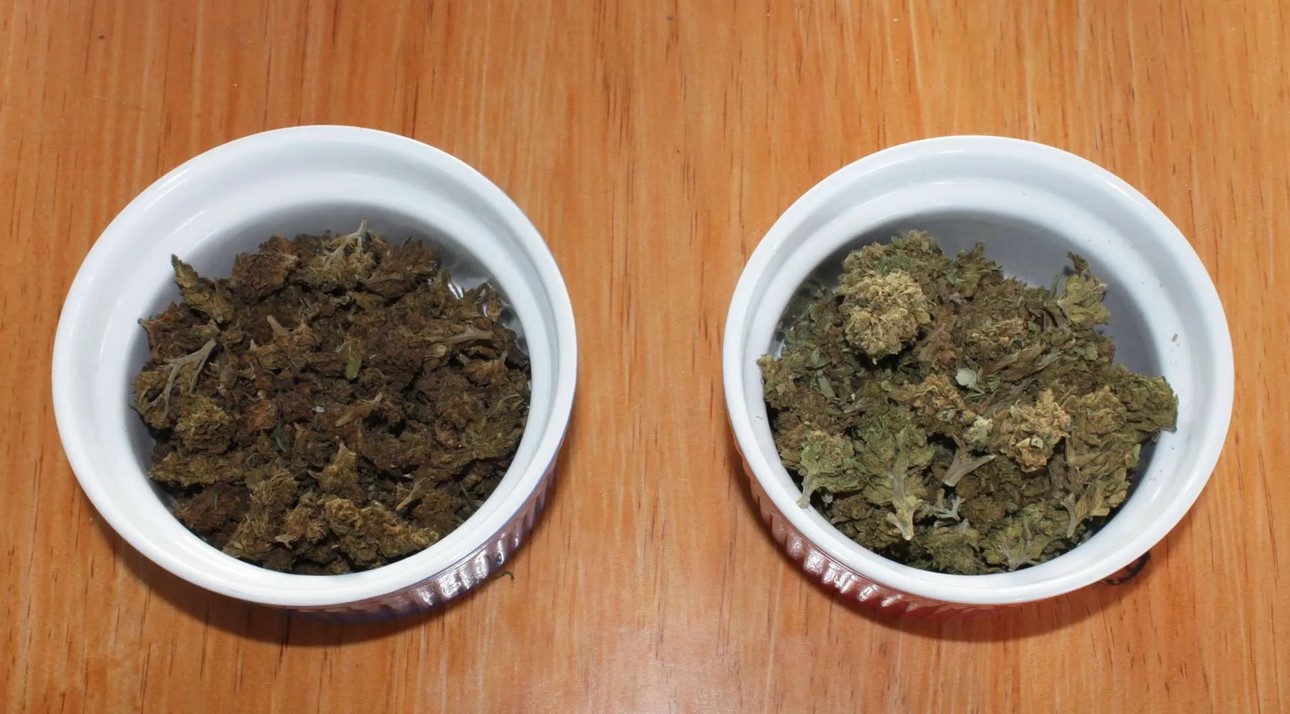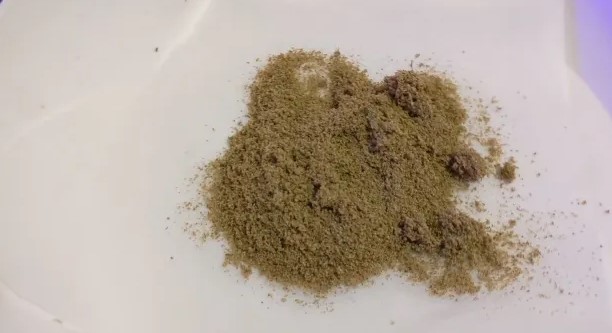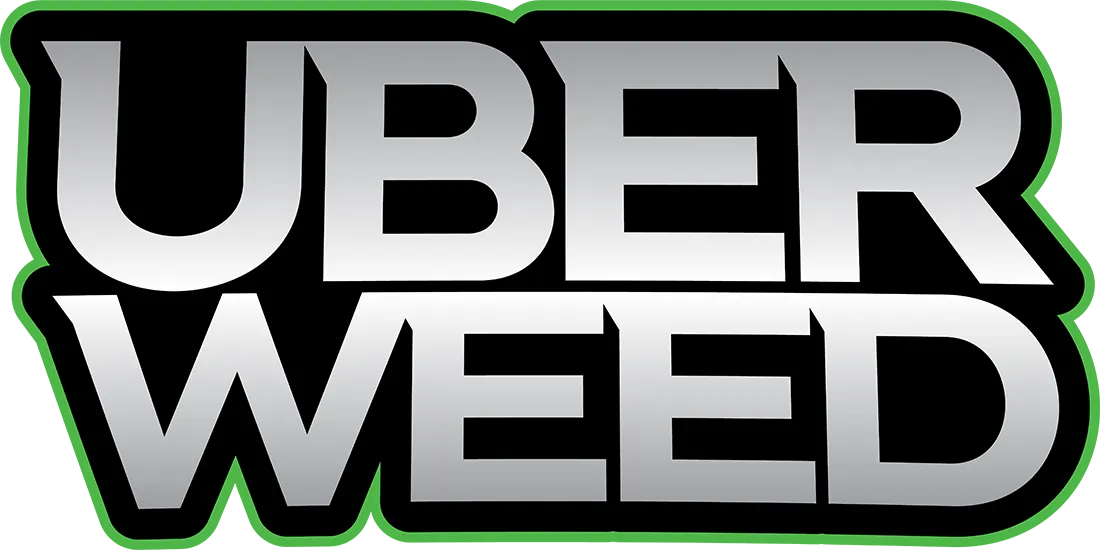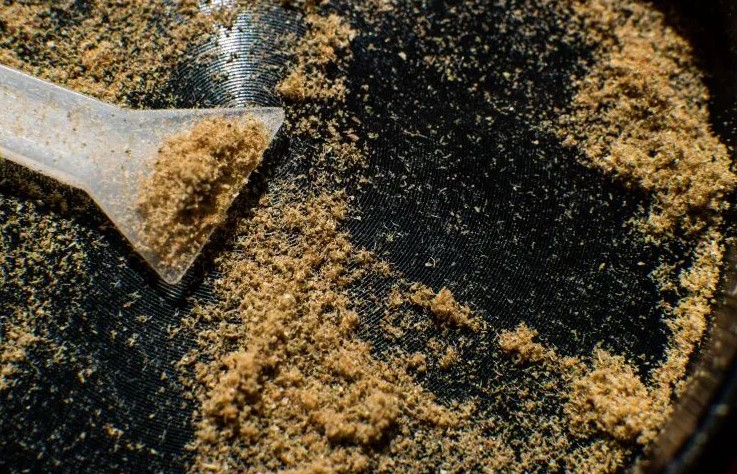Uncategorized
How To Decarb Kief
If you want to make edibles, decarbing your cannabis is a crucial step that many people misunderstand. The process and reasoning behind it can be confusing if you don’t know the basics, but kief seems to add an extra layer of confusion.
Decarbing weed is a process that turns THCA into THC, and it’s vital to do this before using kief in edibles. The great news is that decarboxylating kief is just like decarbing regular cannabis flower—just for a shorter amount of time. And once you know how to decarb kief, cooking with kief will be no problem.
How to Decarb Kief: 4 Steps
If you have decarboxylated weed before, the process for kief will be familiar to you. The only difference is the timing and temperature. With just your kief, an oven-safe dish, and a couple of pieces of parchment paper, you’re good to go!
Collect Your Kief
If you’ve been using a grinder, the kief has already probably collected for you. If not, gently rub the cannabis on top of a silk screen with something underneath to catch it. Make sure to choose a screen that has 75 to 125 micron holes.
Prepare Oven and Lay the Kief Out
Before you begin, set your oven to 250°F/121°C. Keep in mind that oven temperatures can fluctuate, and it’s often hotter at the top than near the bottom. As a general rule of thumb, it’s best to find a middle spot in the oven for your chosen dish. Next, place a baking sheet or piece of parchment onto the oven-safe dish before starting.

Before you lay the kief out, crumple the sheet to keep as much of it off the hotter oven dish surface. Try to make the exposure to heat as even as possible by spreading out the kief as much as you can. This way, there won’t be any notable piles or lumps in there. Additionally, trap any vapors in place and maximize potency by laying another piece of parchment on top.
Put the Dish in the Oven and Decarb
Your kief is ready to be used once it’s spread out and your oven has reached the right temperature. Place the dish in the oven and leave it there for about 25 minutes, depending on how thick the layer of kief is and how precise your oven is.
After 20 minutes have passed, observe the kief. If it appears too brown for your liking, take it out of the oven. This can be difficult to tell so if you’re unsure about its color, leave the kief in for an additional 5 minutes on your first batch. Unless you placed a small amount or high up in the oven, this method should give you better understanding of what cooked kief looks like overall.
Remove the Dish and Let it Cool
Decarboxylate the kief, then take the dish out of the oven. The parchment can be removed from the hot dish carefully to prevent further cooking; too much heat can lower THC levels in the final product. When it’s cooled (which doesn’t take long with kief), you’re ready to add it into your recipe.
Different Temperatures and Data on the Decarboxylation of Kief
When you’re looking online for instructions on decarboxylating kief, you might notice some conflicting advice. Some sources recommend using a lower temperature for a longer period of time, and this is also totally fine. The chart below basically sums up the issue.
When the temperature is increased, THC levels will also rise quickly but then start to decline rapidly. If you opt for lower temperatures, it will take a bit longer overall but the process will be more even.
Our approach is a good balance of time and temperature: 250 °F for 25 minutes. However, if you prefer to go lower and slower, that works too – some sites suggest 220 °F (104 °C) for 45-50 minutes, for example.
After 30 minutes of decarb at 240°F, the THC percentage in kief went from 3.8% to 25.4%. This suggests that you likely won’t need longer than 30 minutes with kief. With plant material, however, there was a continuous increase in THC levels for up to an hour after decarb.

How to Decarb Hash
Decarbing hash is, for all intents and purposes, the same as decarbing kief. The only difficult part is breaking up the hash into manageable pieces. Once you do that–and maintain a consistent size–you can go through the process aforementioned. If you have a high-CBD strain, though, it’s better to decarb it for closer to 40 minutes; this gives CBDA enough time to convert fully.
What is Kief?
Kief is a fine, powdery form of the trichomes found on cannabis plants. These glandular structures contain THC, CBD and other cannabinoids. Many grinders have “kief catchers” to collect this material as it breaks away from the plant matter during grinding. Kief that has been sifted through a mesh screen is dry and ready for use.
The kief itself is darker than the trichomes on the plant, with a golden to brown color, or even with hints of green because of leftover plant matter. Generally, it’s purer if it’s lighter in color, but you’ll still get good results even if the kief you use isn’t perfect.
Why You Should Decarb Before Cooking with Kief
Decarboxylation is a pivotal step in making edibles because it transforms the THC, CBD and other cannabinoids into a usable form. In the plant – and in the kief that rubs off from it – THC exists as THCA, CBD as CBDA etc. These are acid forms of molecules, which basically comprise an additional carboxyl group. “Decarbing” refers to taking away this extra group, creating the desired chemical effect when ingested.
If you’re planning to vape or smoke your weed, there’s no need to worry about decarbing it first–inhaling the herb decarbs it. However, if you want to make edibles or cannabutter, you’ll need todecarbthe cannabis before using it in a recipe.
Though the process remains constant–adding heat to activate kief or cannabis flower–things become more complicated if you want maximumdecarboxylation efficiency. While kief or cannabis will decarb quicker at high temperatures, it begins to lose potency after a certain point. Because of this phenomenon, its best that you follow instructions for how to decarboxylate kief carefully in order prevent loss of THC/CBD content.
Conclusion
You can use kief however you want once it’s decarboxylated. Many people prefer to cook with kief because it is more compact and concentrated than flower, imparts less flavor into your dishes, and has a powdery consistency that opens up other options for cooking—like incorporating kief into seasoning mixes. You’re all set to go once your kief is decarbed, no matter how you intend on using it.


